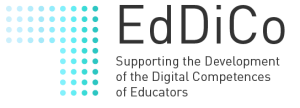SMETOOL SME’S TOOL TO PREVENT BURNOUT, IO4 Toolkit for managers. Circle of Influence
Diversity in a group of people causes challenges in terms of cooperation and communication, and all changes have consequences for the daily workload. This can have a positive or negative impact on people’s stress level and on the perception of one’s workload. When you are dealing with long-term stress, it is important to look at which stress factors you can rule out to reduce tension. Energy guzzlers or things that you are constantly worried about can really control your (working) life. Here, proactivity is key. Being and thinking more proactively will raise resilience whereas focusing on things you can’t influence and acting reactively will reduce resilience by an increase in your stress levels.
Toolkit for Resilience webinar focuses on health and wellbeing. It forms part of SMEs toolkit.
5 Toolkits for managers presented are different ways to raise resilience designed for SME managers to help prevent burnout at work. The content will help the user spot any warning signs at an early stage and ultimately improve your employees’ happiness in the workplace. The toolkit is linked to the self-assessment that can be used on identifying reduced resilience of employees.
5 toolkits are: Circle of Influence, Core Quadrants of Ofman, GROW Model, Progression Feedback, Social Styles.

